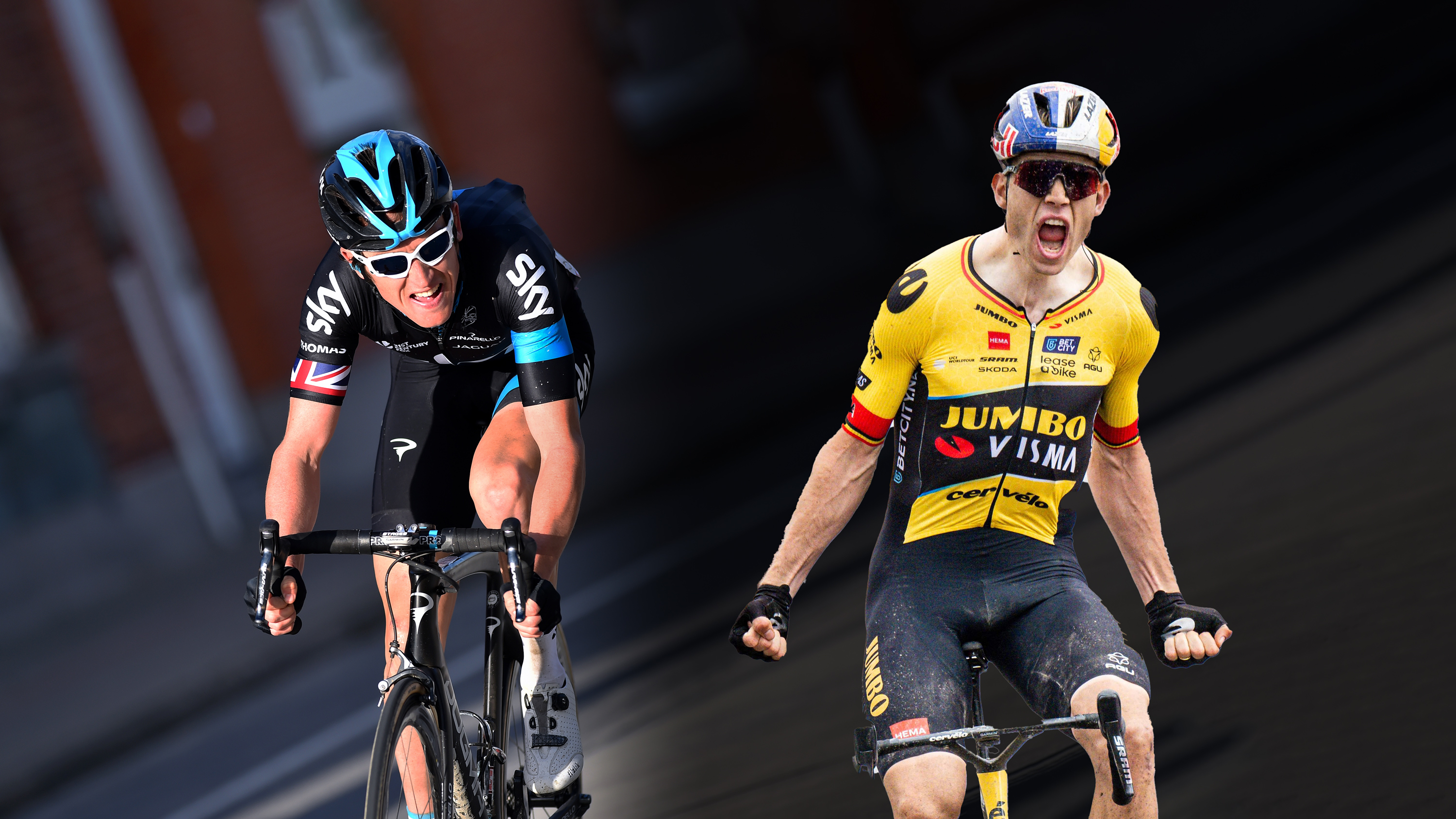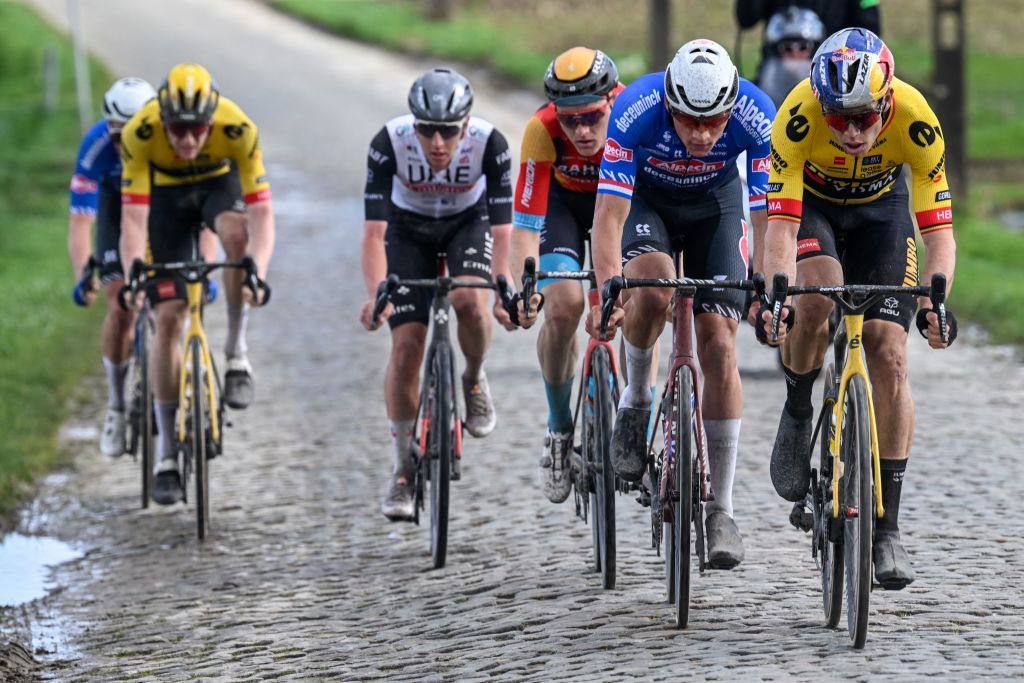From Team Sky to Wout van Aert - how altitude training revolutionised preparation for the Classics
Geraint Thomas and Ian Stannard on the pros and cons of Belgian’s Tenerife training camp

After three weeks of lonesome labour on the volcano, Wout van Aert heads straight into the crucible of the cobbled Classics when he lines up at the E3 Saxo Classic on Friday. For the past 22 days, the Belgian was sparring with shadows up and down Mount Teide. On Friday, he will trade blows with Mathieu van der Poel in the heart of the Flemish Ardennes.
For generations, received wisdom decreed that this kind of abrupt transition from training camp to racing was simply too risky to be worthwhile, but that thinking has been turned on its head in recent years. Just this month, after all, Tadej Pogacar delivered an 81km solo to win on his first race day at Strade Bianche, while Van der Poel began his season with the Oscar for best supporting actor at Milan-San Remo.
Van Aert has already racked up nine race days this season, of course, winning Kuurne-Brussel-Kuurne and placing third at Omloop Het Nieuwsblad, but his decision to sit out Strade Bianche, Tirreno-Adriatico and Milan-San Remo marked a significant departure from his typical build-up to the key weekends of his Spring.
After a series of frustrations at the Tour of Flanders and Paris-Roubaix over the years, Van Aert clearly reckoned that a change was in order. Yet while his decision to pare back his cyclocross commitments over the winter was imminently logical, his near month-long hiatus before E3 Harelbeke stoked curiosity, not least because it’s been done before, and not with any notable success.
In 2013, buoyed by their annexation of the Tour de France the previous summer, Team Sky sought to apply some of coach Tim Kerrison’s unconventional thinking to the Spring Classics. A core group that included Geraint Thomas, Ian Stannard and Bernhard Eisel took the then almost taboo step of riding neither Paris-Nice nor Tirreno-Adriatico before the Classics. Instead, they spent a little over a fortnight cloistered in the Parador hotel atop Mount Teide for a training camp.
Sky’s Classics unit had already raced early and often that season, lining out at the Tour Down Under, the Tour of Qatar, Opening Weekend and Le Samyn, but their hiatus was met with a degree of scepticism among their peers. There was also considerable intrigue, mind, given Sky’s stage racing dominance in that era.
“It never seemed that wacky to us, but it was definitely against the grain and the traditional way of doing things,” Thomas told Cyclingnews and Het Nieuwsblad recently. “These days people are training a lot more and racing less, and they can do the work they need to do, so I don’t see why it won’t work. But for me personally, I’d rather do those races… I don’t think it was necessarily a huge negative when we did it, but I definitely would prefer to race myself.”
Get The Leadout Newsletter
The latest race content, interviews, features, reviews and expert buying guides, direct to your inbox!
Then and now
Team Sky’s spell at altitude was shorter than the 22 days compiled by Van Aert, Tiesj Benoot, Jan Tratnik and Per Strand Hagenes, as Thomas et al returned to sea level in time to line out at Milan-San Remo. The principle, however, was the same. As well as the residual benefits of training at altitude, the idea was to take on a strictly calibrated workload in a controlled environment rather than subject themselves to the variables of weather and intensity at a race like Tirreno.
“It was a similar approach to what we did for Grand Tours,” Stannard told Het Nieuwsblad. “The clearest benefit was just that we could train in an environment without distractions.”
Stannard, incidentally, would deliver Sky’s best display of the Classics campaign when he placed sixth at the snow-shortened Milan-San Remo after attacking ahead of the Poggio. “I rode my best San Remo ever, but that was partly thanks to the weather conditions that suited me,” he said.
At the cobbled Classics, however, Sky struggled. Thomas’ fourth place at E3 Harelbeke was as good as it got, and the team made little impression at the Tour of Flanders, where Edvald Boasson Hagen placed 17th, and at Paris-Roubaix, where Eisel reached the velodrome in 12th. There was a sense of quiet schadenfreude in some quarters of the peloton at how Sky’s training camp had misfired, even if the riders themselves didn’t see the experiment itself as a failure.
“I loved being up there, the silence, no internet. We were all experienced riders back then and didn’t need those smaller races to get used to the cobbles anyway,” said Eisel. “We mostly did intensity training up there: go all in and get into shape, training with less oxygen than at sea level.”
Thomas conceded that he would have preferred to have raced rather than trained ahead of the cobbled Classics, even if he insisted that the decision to dispatch him to altitude that March hadn’t been a mistake per se.
“I don’t think it was necessarily a huge negative when we did it, but I definitely would prefer to race myself,” Thomas said. “To be honest, it’s so long ago I can’t remember, but for me it’s just the race rhythm and the punch and everything that I’m missing after a training camp like that.
“A guy like Van Aert, he races in cyclocross all year, so I don’t think that’ll be so much of an issue for him, and it’s slightly different to myself. For me, I need more of the irregularity of it all, the speed and everything.”

Up to speed
Van Aert is a different rider, and this too is another era. The lie of the land of professional cycling and its prevailing training philosophies have shifted considerably in the eleven years since Team Sky’s Classics squad took up their March residence on the volcano. Or, as Stannard put it: “It’s been eleven years: Jumbo knows more about altitude camps now than we did back then.”
Besides, Van Aert’s best one-day performances came from a standing start during the pandemic-delayed 2020 season. Fresh from training camps in Livigno and Tignes that summer, Van Aert proceeded to scorch the earth at the August Strade Bianche before out-jousting Julian Alaphilippe to win a Milan-San Remo of the highest calibre a week later. For good measure, he added the opening stage of the Critérium du Dauphiné ahead of an all-action Tour France.
Van Aert might just have spent three weeks away from racing, in other words, but it will be a surprise if he isn’t immediately up to speed at Harelbeke on Friday. Whether that will suffice to beat Van der Poel is another matter, but Van Aert should be ready to try.
“For Van Aert, this is not new,” Eisel said. “He knows how his body reacts to it. He can peak, his numbers tell him basically everything. He’s been doing this for years now. There’s definitely a plan behind it. You can’t compare racing with what it was four or five years ago. It develops every year. Wout has been adapting every year – less cross, more racing, less racing – and everything seems to work with him. He has no reason at all to doubt this now.”
According to Van Aert’s Strava account, he spent over 75 hours on the bike during his tenure in Tenerife, clocking up more than 50,000 metres of climbing. In one training ride alone, Van Aert climbed over 5,000m and spent over seven hours on the bike. Elsewhere during the trip, he equalled a record set by Miguel Ángel López on the ascent of Granadilla. Still, Van Aert is well aware that the only statistics that matter this Spring are his results at the Tour of Flanders and Paris-Roubaix.
“I was able to prepare here in a very calm way, we had beautiful weather, and we were able to complete our schedule completely. It was certainly nice for me to be able to prepare in peace, far away from everything,” Van Aert told reporters in a video call on Tuesday before his return to Belgium.
“The past has often taught us that I respond well to an altitude training period and that I don't need too much time to get up to speed afterwards. That's why we dared to take this approach. I think I have been able to find the last per cent here in Tenerife to be at my best.”

Barry Ryan was Head of Features at Cyclingnews. He has covered professional cycling since 2010, reporting from the Tour de France, Giro d’Italia and events from Argentina to Japan. His writing has appeared in The Independent, Procycling and Cycling Plus. He is the author of The Ascent: Sean Kelly, Stephen Roche and the Rise of Irish Cycling’s Golden Generation, published by Gill Books.